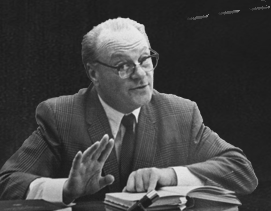Axiology is the study of values. The founder of formal axiology, Robert S Hartman, believed he had discovered a meta-science, grounded in three value dimensions. He formalized his axioms of value with a calculus making measurement of previously difficult concepts possible.
Three Value Dimensions and One Science with which to rule them all.

Hartman was a forward thinker who managed to integrate value theory across several disciplines. As a court judge, Hartman was established in the courts of Berlin but was forced to flee Nazis and the Third Reich. He ended up in the U.S. where he completed a Ph.D in philosophy majoring in value theory. By exchanging with other thinkers like Viktor Frankl, Erich Fromm and Abram Maslow, Hartman was able to produce the first Value Profile tool in 1967 and enter the disciplines of psychology.
Since his first profiling tool, Hartman’s work has been used in career selection, existential, personal and marriage counseling, leader development, sport and team coaching and psychology, military training in judgment and decision-making, ethics, education, economy, business and political science.
Besides contributing new knowledge to these fields, Hartman augmented the work of others like Maslow and Frankl and with these men, dreamed of creating a university where value theory could be investigated, researched and our knowledge of the infinite value of human life furthered in a meta-science that engaged natural, moral and social sciences.
Seriously? How could one science bind them all, let alone rule them?
Maybe the human tendency to compare has something to do with it. Let’s say I have to decide among 4 options and I place these in order of choice – there are 24 value hierarchies possible. Using Hartman’s profiling technique, all things have one of three values and can be valued in one of three ways allowing for 362,880 possible valuation hierarchies. Remember, valuing, or value judgment is about assigning worth to a person, thing or idea. But people make bad, wrong or negative judgments all the time, so beside those nine valuations, nine more devaluations are possible, bringing the total to 18 possible value judgments. Those 18 possibilities make 6.4 quadrillion possible hierarchies (18x17x16x15x…). And Hartman has two profiles, each with 18 items to choose from (that’s 36x35x34x33x32x and so on).
Statistically, it’s rare to see a person’s judgment on the HVP identical to another’. Practically, there’s more possible judgment patterns than people existing on the planet. As an analysis tool, Hartman’s axiology fares better than many IQ, EQ, performance or personality assessments that test for much fewer outcomes. These results typically box, label or confine individuals to a bound system or theory.
Only a meta-science can handle data as unique and infinite as the human being and the many disciplines they engage in. With Hartman’s axiology, we have the tools that let us reach across disciplines and combine the unique potential available in all of them. At the very least, Hartman has created a way for research that integrates the sciences to occur. We’re only limited by our valuation, or sadly the equally human tendency to devalue.